What should you do in a thunderstorm?
- Published
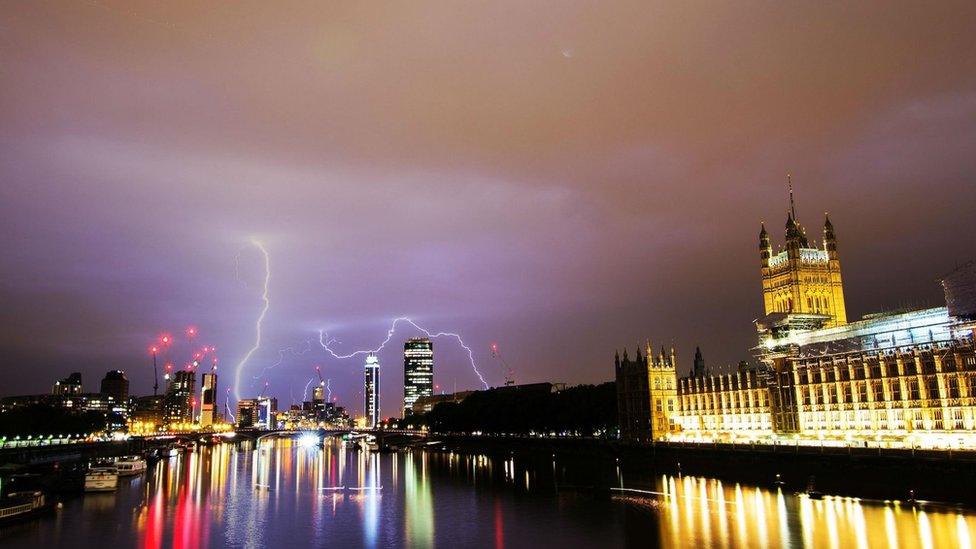
Much of the UK has recently been hit by thunderstorms, but what is the best way to stay safe when thunder and lightning hits?
Thunderstorms are short, sharp and shocking - for some literally.
If you can hear the clouds rumbling, chances are the storm is close enough for you to be hit by lightning - it can strike up to 10 miles away from the centre of a storm.
Count the seconds between seeing lightning and hearing thunder - if it is less than 30 seconds, there is a threat.
If thunderstorms are forecast, postpone or cancel outdoor activities - especially golf and rod fishing.
If a storm is approaching, take cover inside or in a car with the windows wound up - sheds, isolated trees and convertibles do not afford sufficient protection.
Boaters and swimmers should get to shore as quickly as possible, as water conducts electricity. So too do metal pipes and phone lines.
Unplug all non-essential appliances, including the television, as lightning can cause power surges.
What not to do
Do not use candles if the lights go out, as this poses a fire risk, and instead use a torch.
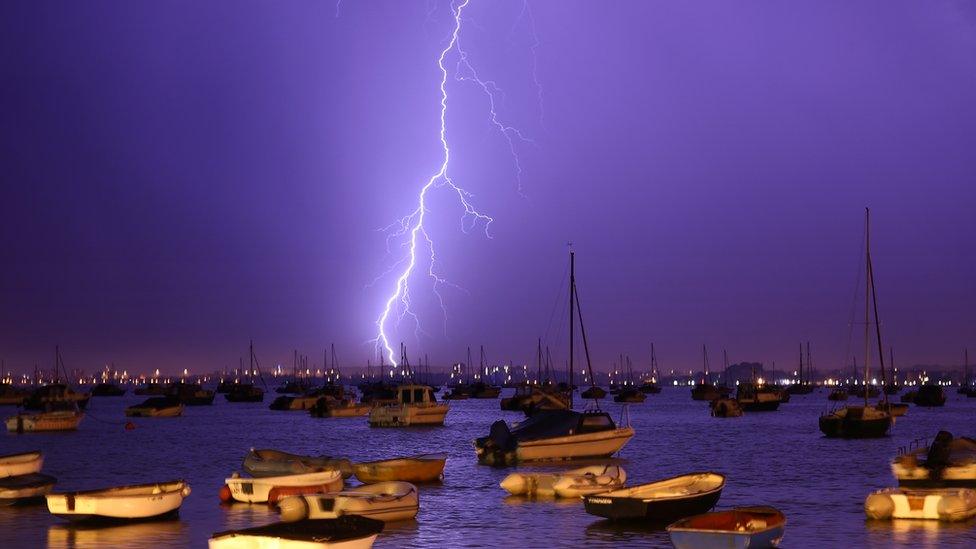
When lightning strikes it is important to get out of the water as soon as possible
Do not make phone calls, unless it is in an emergency, or put up an umbrella - the metal directs the current into the body.
It is also best to put off baths, showers and dish washing, in case lightning strikes the house and sends a jolt of electricity through the metal plumbing.
During the thunderstorm
If caught outside in a thunderstorm, find a low spot away from trees, fences, and poles.
If your skin tingles and hair stands on end, lightning is about to strike.
Crouch down immediately, balancing on the balls of your feet, placing hands on knees with head between them.
This makes you into the smallest target possible, and minimises contact with the ground.
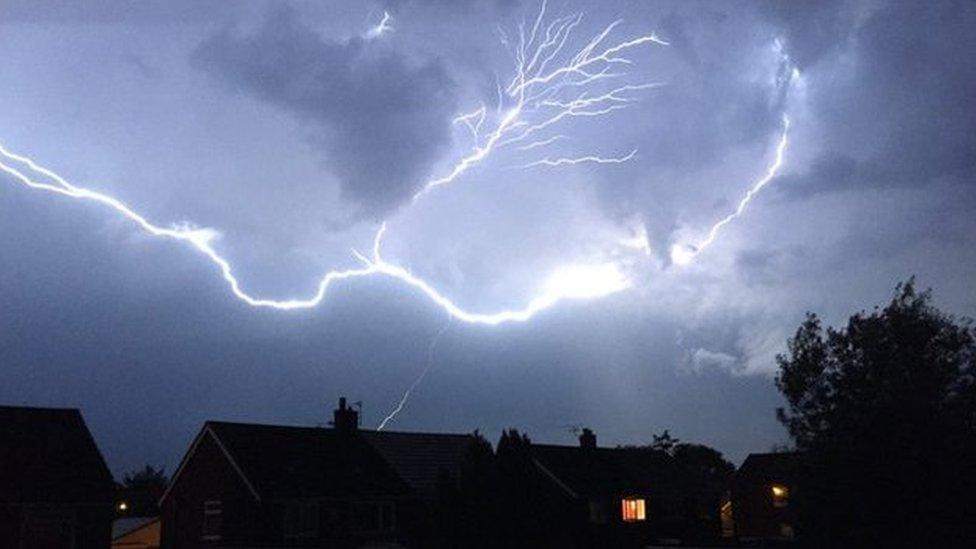
Lightning can strike homes and send a jolt of electricity through the metal plumbing
If someone has been hit by lightning, call for help as they will need urgent medical attention.
It is safe to touch them - people struck by lightning carry no electrical charge that can shock other people.
Check for a pulse and for breathing - if you know first aid, begin artificial respiration and CPR if necessary.
If they are breathing, check for other possible injuries.
Lightning strike victims have burns in two places - where the electric shock entered and then left the body, usually the soles of the feet.
They may have broken bones or loss of hearing or sight.
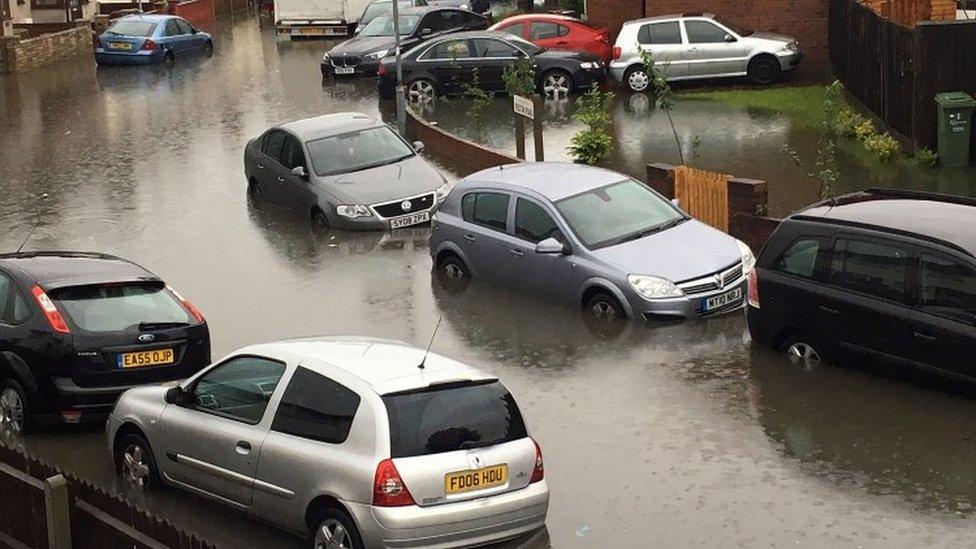
If waters rise, do not attempt to drive to safety
If waters start to rise, head for higher ground.
Do not try to drive to safety, as cars can float in as little as a couple of feet of water, the depth of which is often very difficult to judge.
After the thunderstorm
Be wary of venturing out too soon - the BBC Weather Centre advises waiting 30 minutes after the last flash of lightning.
Avoid downed power lines or broken cables.
And one final tip - it is a myth that lightning never strikes the same place twice and always hits the tallest object.
Lightning strikes the best conductor on the ground - whether it has been struck before or not.
Sources: The Met Office and BBC Weather
- Published9 August 2013
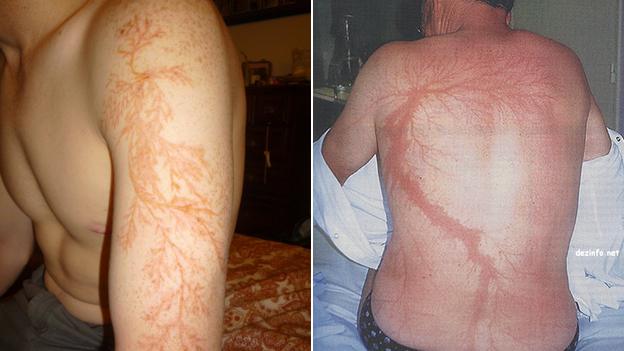
- Published28 July 2014
